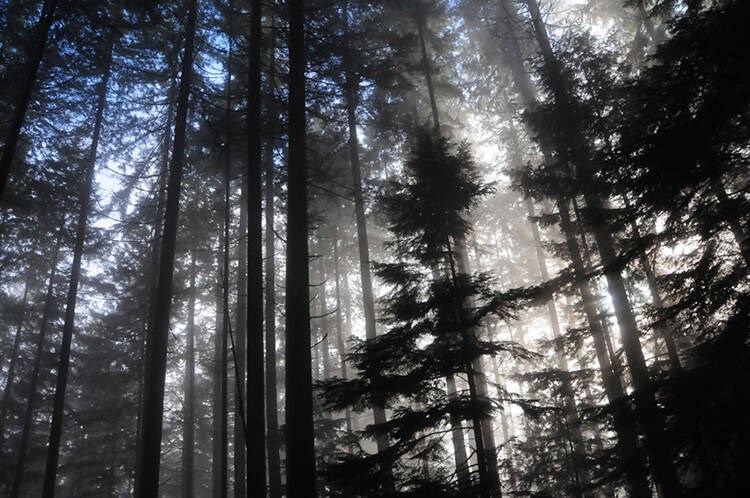Oh, to be a tree in West Vancouver.
We should all be so cherished.
If you want to cut and trim them these days, you face a considerably restrictive environment a little laden with bureaucracy enforcing it, for good reason. After all, history is strewn with the fruits of fueled chainsaws and eager lumberjacks wherever someone built or newly occupied.
A central tension in urban planning is to respect development without disrespectfully removing the majestic trees from properties. It takes little time in living here to appreciate the district’s history of significant battles to preserve and enhance the canopy, also for very good reason.
Failures and successes lay before us – the clear-cut and tree-lined – and one of the many political challenges for this council will be how it tightens or loosens its Urban Forest Management Plan, due for consideration in 2023.
Wherever we live, we have realized lately how trees are difference-makers in communities as the climate changes and severe weather becomes more serialized than episodic. Sure, it is sunny in the summer, but not for 102 consecutive days, and that is a message lost, one hopes, on no one.
It doesn’t take long to meet West Vancouverites who anthropomorphize trees or who at least see them as the central character of their properties. Even if science tells us that trees don’t have “feelings” or “personalities,” there is a debate about whether they communicate and cooperate with each other across fungal networks in what has been dubbed the “wood-wide web.”
In West Van, you can’t fiddle with the forest on private property without a permit if the tree is greater in diameter than 75 centimetres at “breast height,” which is 1.4 metres high, and if you can’t reach the targeted branch from the ground. Need a ladder? Get thee to government.
That permit protection extends to Arbutus, Gary Oak, Pacific Yew, Pacific Dogwood, Yellow Cedar or Shore Pine species 20 centimetres in diameter at breast height. The district also has a Watercourse Protection Area and a Foreshore Protection Area (10-cm-diameter protection there), and yes, a roster of Heritage Trees.
But the news is not all good. The most recent State of the Urban Forest report last year looked at what grows below 1,200-foot elevation (the so-named Urban Containment Boundary) and found room for several key improvements.
Compared to same-sized municipalities – North Vancouver District is an exception – the report concluded we have a small budget and staff, and we don’t protect smaller trees. We are municipally reactive instead of proactive on pruning, and we were the only community surveyed without a dedicated budget to replace trees (others plant 50 to 200 trees on public land annually). We also don’t have an accurate tree count of each species.
Canopy comprised 51 per cent of land in 2021, higher than comparable municipalities but a two-point drop from 2018. The largest losses took place in the Rodgers Creek neighbourhood as a subdivision was built, along with spots within British Properties, Westmount and Sunset Beach.
If I want to prune my three-stem Western red cedar, I’m in for several weeks and hundreds of dollars before the job starts, much less when it’s done: hiring an arborist certified by the International Society of Arboriculture, devising and articulating a plan, getting that plan and a copy of my land survey along with an overhead picture of the tree involved and $300 to the district arborist, and awaiting the verdict. It usually takes two to three weeks to review and provide the permit. This year there have been 141 tree-cutting applications before the district.
Given the cost, it’s understandable how some property owners just let things go for years on end, even when there are branches near roofs and power lines. It’s even understandable how some just try to discreetly do the work within the guidelines themselves.
Of course, there are also the transgressors – I’ve read about those who “accidentally” cut trees whose fate they “thought” was theirs to decide. (They, too, are understandable, just not appreciated.)
Considering that lush canopy is often a major reason to move and stay in West Vancouver, the report’s recommendations are worthy priorities for a new council juggling finances as custodians of the land, not just our dollars.
Kirk LaPointe is publisher and editor-in-chief of BIV as well as vice-president, editorial, Glacier Media Group, the North Shore News’ parent company. He is also a West Vancouverite.



